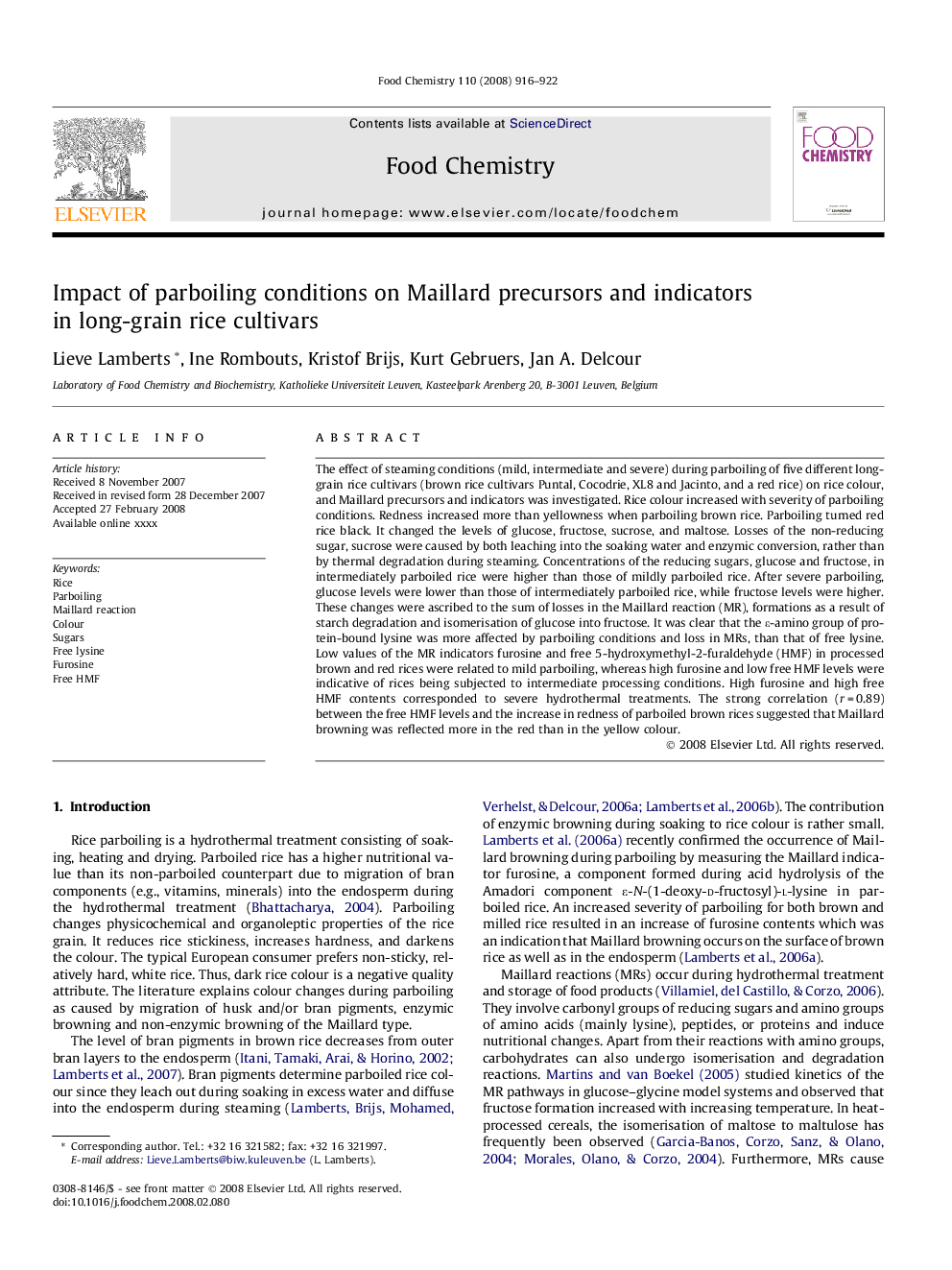| Article ID | Journal | Published Year | Pages | File Type |
|---|---|---|---|---|
| 1188169 | Food Chemistry | 2008 | 7 Pages |
The effect of steaming conditions (mild, intermediate and severe) during parboiling of five different long-grain rice cultivars (brown rice cultivars Puntal, Cocodrie, XL8 and Jacinto, and a red rice) on rice colour, and Maillard precursors and indicators was investigated. Rice colour increased with severity of parboiling conditions. Redness increased more than yellowness when parboiling brown rice. Parboiling turned red rice black. It changed the levels of glucose, fructose, sucrose, and maltose. Losses of the non-reducing sugar, sucrose were caused by both leaching into the soaking water and enzymic conversion, rather than by thermal degradation during steaming. Concentrations of the reducing sugars, glucose and fructose, in intermediately parboiled rice were higher than those of mildly parboiled rice. After severe parboiling, glucose levels were lower than those of intermediately parboiled rice, while fructose levels were higher. These changes were ascribed to the sum of losses in the Maillard reaction (MR), formations as a result of starch degradation and isomerisation of glucose into fructose. It was clear that the ε-amino group of protein-bound lysine was more affected by parboiling conditions and loss in MRs, than that of free lysine. Low values of the MR indicators furosine and free 5-hydroxymethyl-2-furaldehyde (HMF) in processed brown and red rices were related to mild parboiling, whereas high furosine and low free HMF levels were indicative of rices being subjected to intermediate processing conditions. High furosine and high free HMF contents corresponded to severe hydrothermal treatments. The strong correlation (r = 0.89) between the free HMF levels and the increase in redness of parboiled brown rices suggested that Maillard browning was reflected more in the red than in the yellow colour.
